The ‘phone by my elbow burst into noisy life. I’d left the ringer turned to full and it was like being jogged by a chugger; I nearly spilled my Earl Grey. I composed myself and answered.
“It’s here…”
London Camera Exchange in Guildford, for so long my primary (and local) source of optical excellence and general photographic goodness, had managed to secure stock of the new Fujinon XF35mm f/2.0 WR. I got there as fast as I could and parted with the surprisingly reasonable sum of £299 (of which more later).
As anyone who has read my scribbles for any length of time knows, I come from a long background of using Leica M cameras and lenses and, rightly or wrongly, they remain to this day my yardstick when evaluating new equipment, particularly the Fuji X line. In Leica terms, therefore, if the original and now slightly venerable Fujinon XF35mm f/1.4 R plays in Summilux territory, in aperture terms at least, then with the new f/2.0 Fuji is planting its flag firmly on the Summicron’s doorstep.
Dentist’s Monthly
At this stage I don’t doubt that there will be those who are snorting their first-harvest acai and goji-berry muesli over their copies of Dentist’s Monthly and pooh-poohing the very idea that one could dare compare the humble Fujinons with Wetzlar’s finest. The very idea!
Well, I have news for the tooth doctors—having used both, you can.
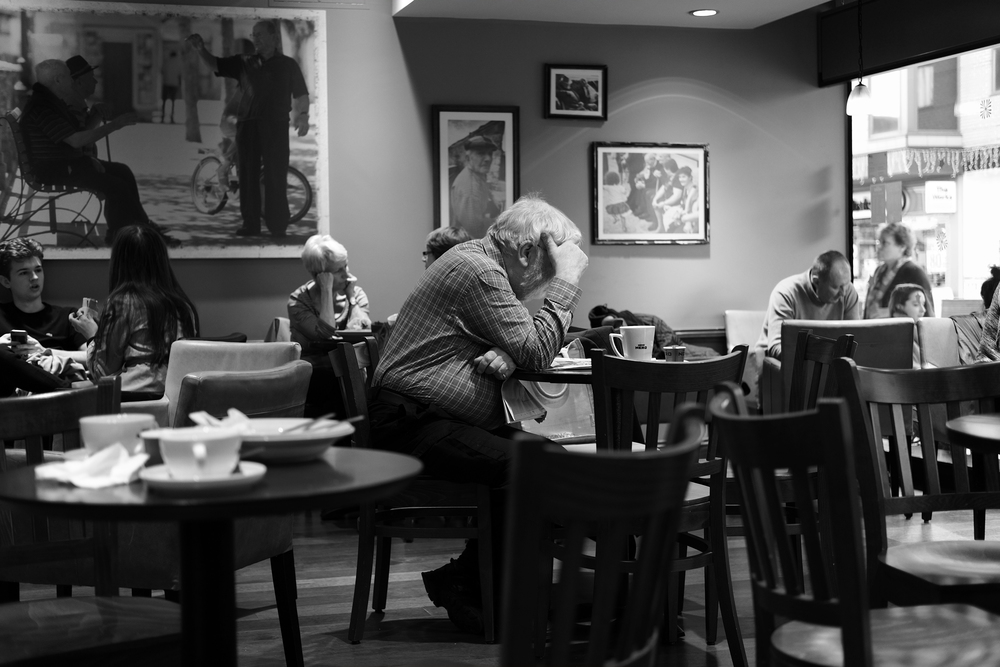
The similarity to the Summicron doesn’t end at aperture, focal length and angle of view. In appearance, the new Fujinon resembles a Mark III or early Mk.IV Summicron, tapering slightly as it does from mount to front element. That tapering, by the way, is aesthetically pleasing but a bit of a pain when changing lenses. I have quite large hands and have developed a one-handed lens-change technique which involves taking the rear cap off the lens to be mounted, releasing the mounted lens and turning it a fraction, then using one hand to hold the two lenses nose-to-nose, twisting the old lens fully off, rotating the wrist through 180 degrees and mounting the new, before end-capping the old. It takes a lot longer to write than to do. It works best with wider-bodied lenses of a similar diameter; the new 35 is a one-off in the Fuji range and doesn’t play nice with the others when using my technique.
Anyway, that’s a minor and personal gripe. Back to the lens itself. It is relatively compact for its focal length and aperture, particularly impressive given that it also carries a WR designation meaning that it can at least be used with a reasonable degree of confidence in “meh” weather conditions rather than underwater. It comes with an adequate shallow bayonet-fit plastic hood in the box, but I have a 43mm diameter metal vented version on order; I prefer this type for use on my X-Pro1. That standard cap’s going too—at time of writing the lens has been on the camera and in my bag for a whole 72 hours and every time I’ve taken it out to use it the cap’s been nowhere to be seen. Every time.
Made for the X-Pro
On the plus side, the new 35 mounts to the X-Pro1 as if made for it—if you see what I mean. Handling is spot-on, with just the right amount of resistance to the aperture and focussing rings. To be clear, “right” in this context means firm—possibly more firm than some will like and certainly firmer than any other Fuji lens I have used thus far. It’s still focus-by-wire, of course, but Fuji has done a lot to improve the feel and the overall user experience. This is a tactile lens and you find yourself cradling it on the camera as you walk along.
Now, at this point you’ll expect me to carry on by drawing comparisons with it’s older and wider-apertured brother the F1.4. But me being me, I’m going to take a slightly different tack and compare it to the XF27mm 2.8 instead…
Why? Have a look at this:
Fujinon XF35 R: f/1.4 £389 (53mm equiv.) angle of view 44.2 deg. 8 elements in 6 groups, 1 aspherical.
Fujinon XF27: f/2.8 £299 (41mm equiv.) angle of view 55.5 deg. 7 elements in 5 groups, 1 aspherical.
Fujinon XF35 WR f/2.0: £299 (53mm equiv.) angle of view 44.2 deg. 9 elements in 6 groups.

Personal preference
I’m old-school enough to regard any focal length from 35mm to 60mm (equivalent) as “normal”, or “standard”. My personal preference tends to the 50mm perspective but I am particularly partial to a 40, especially for “street” and “travel” use—I’ve had the 40mm Summicron in the past, as well as the exceptional Voigtlander 40mm f/1.4 Nokton. Forty mm gives a really useful field of view, not as wide as 35, while at the same time tight enough not to mean you have to work too hard to fill the frame. The XF27mm is a more than worthy example in this company. Pretty well everybody seems to be comparing the two 35s, but I’m looking here at the new lens versus the 27; identical MRP penny for penny, and cheap enough for both to be regarded as entry-level prime lenses to the ever more extensive X system.
So before we go on, let’s have a slightly closer look at the older 27. This is a “pancake” lens (albeit more of a drop scone than a crepe…); it’s a positively featherweight 78 grams (compared to 170g for the 35mm) but that is understandable given the extensive use of plastic, the lack of an aperture ring and its diminutive size. For the money, you still get a metal lens mount although, irritatingly, no lens hood. The 39mm filter size makes life a tad awkward in that regard, although if like me you have a Leica 50mm Elmar-M lens hood lying about you will find it a perfect fit, and a match both for the 27 and the 60; those two make a great lightweight two-lens travel set, by the way.
The 27 acquits itself well in performance terms with snappy focus, not having a lot of weight for the AF motors to have to fling about. It’s sharp as a tack from f/5.6 onwards and still has reasonable bite out to f/2.8 although to be fair there are sharper lenses in the Fujinon stable. Still, for the price and, like most things Fuji, the 27 punches well above its weight, turning in contrasty and pleasing results with a bokeh which is pleasant rather than profound and good micro contrast, particularly when stopped down. I particularly like this lens for monochrome work, although colour renders well too.
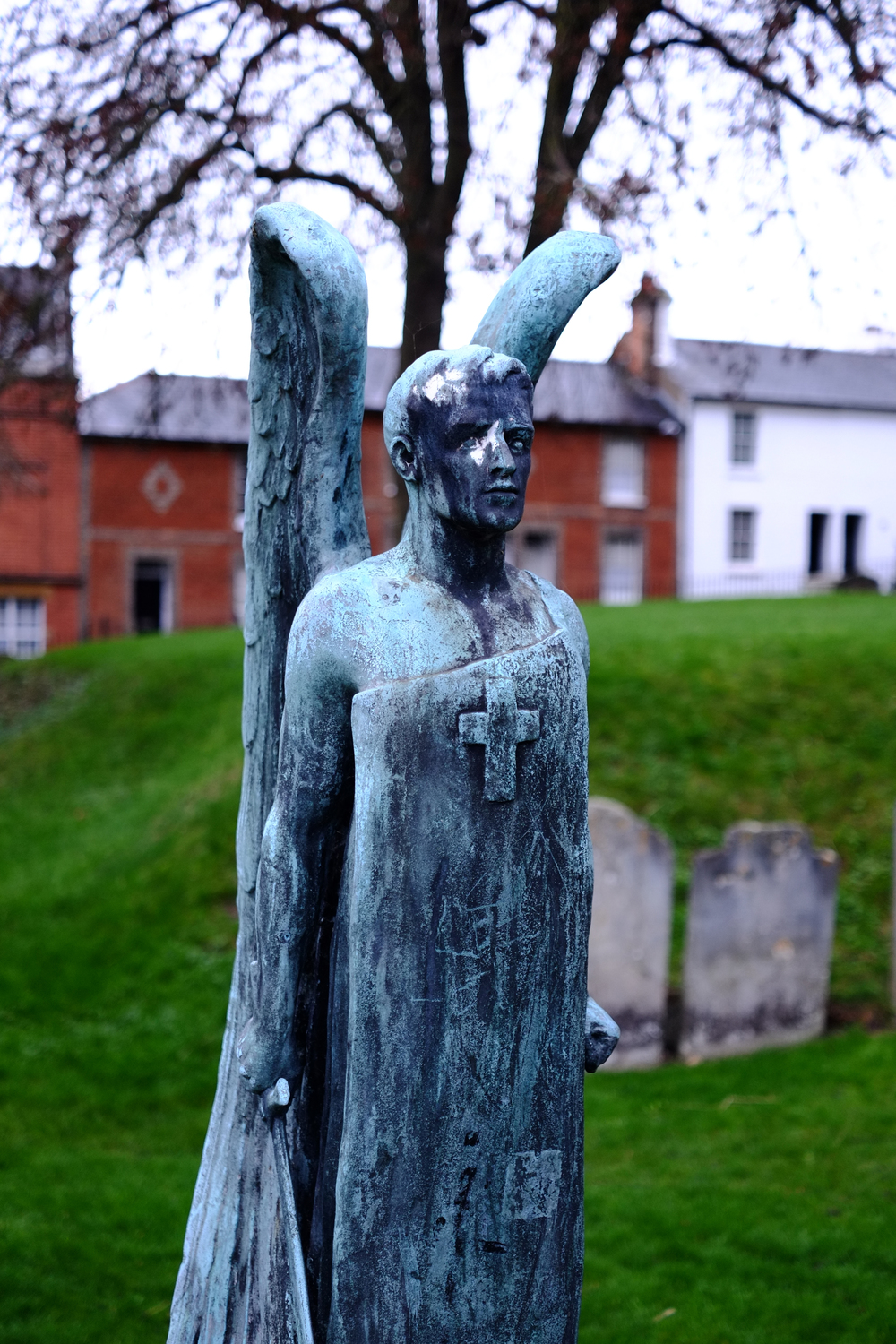
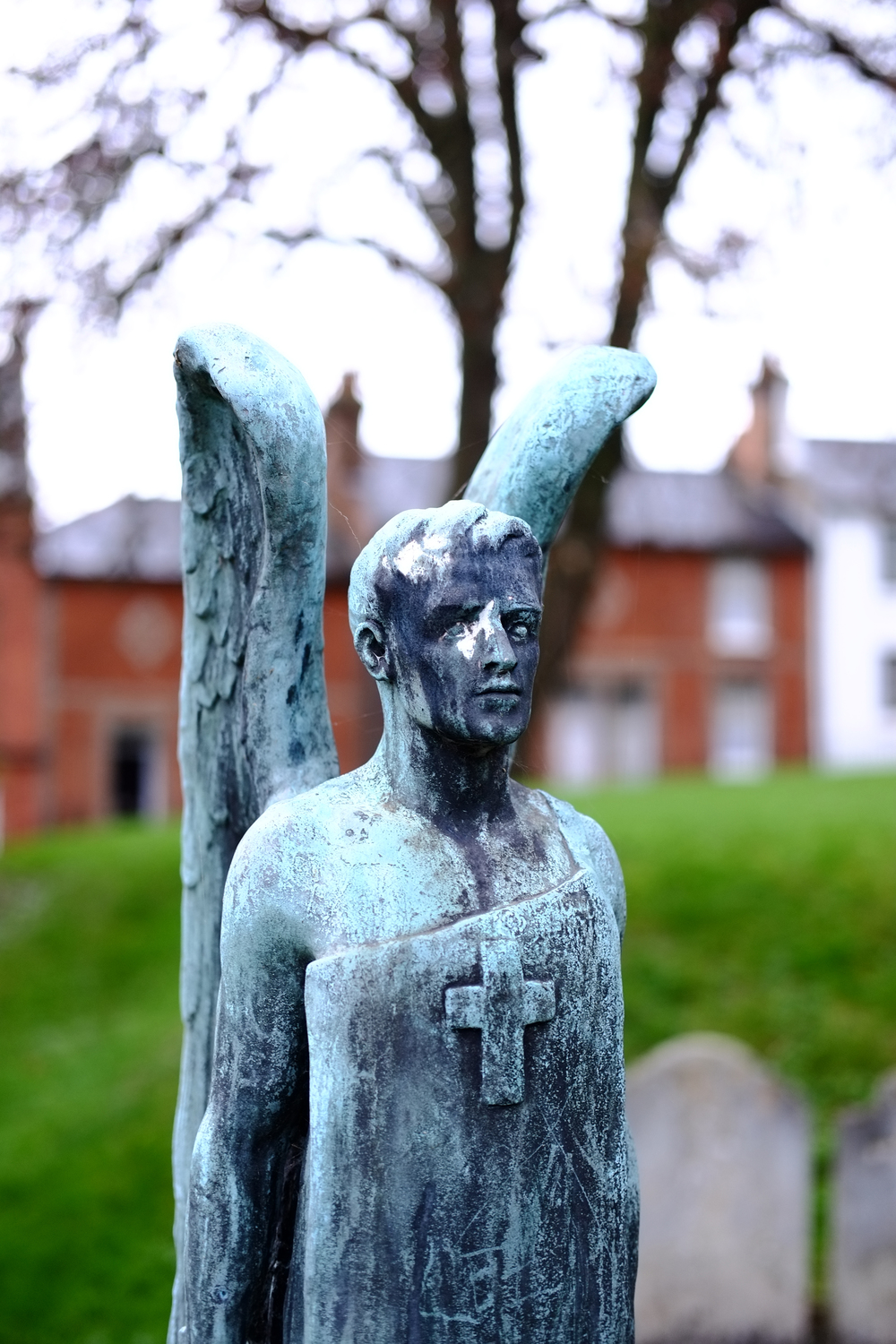
Above: Angel 27mm, Angel 35mm. Below right: Metropolis: 35mm, mono and colour
Side by side
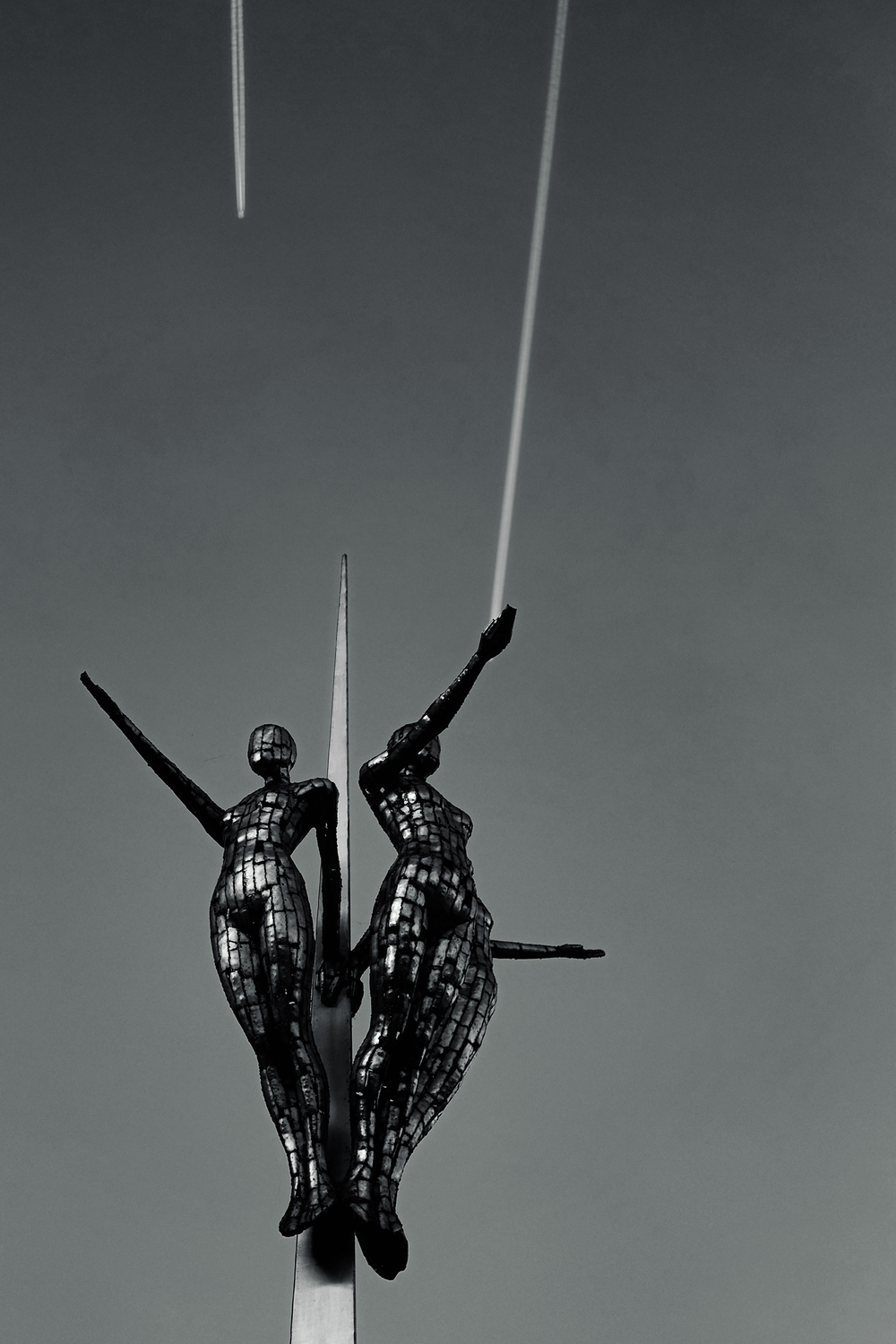
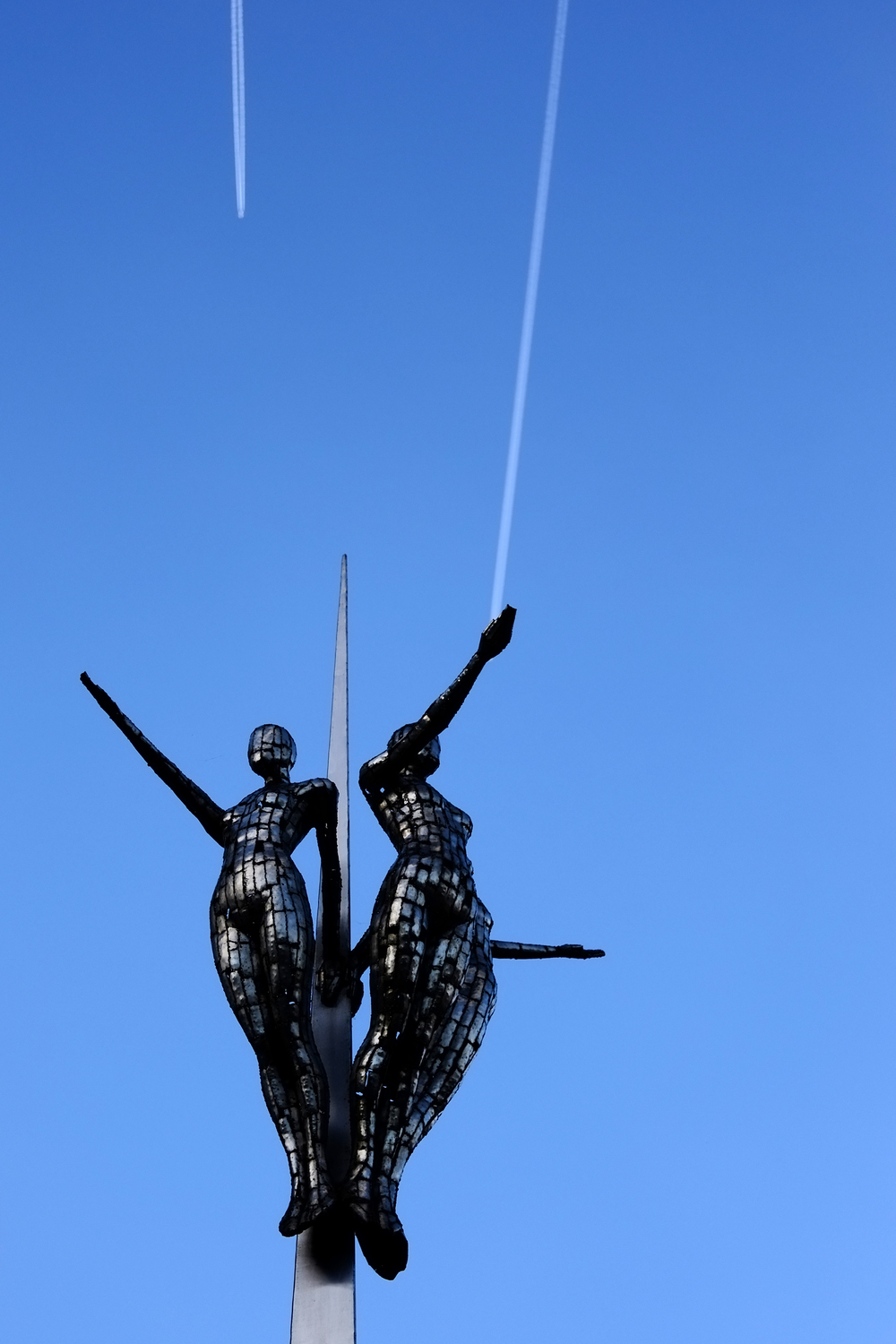
Using the 27 and the 35 side by side is interesting. In a direct head to head, the 35 delivers a bit more contrast and appears to give a very slightly warmer rendition. I meter, by the way, using spot, on the same point each time. The JPGs shown here are straight out of camera. Have a look at the angel shots; they illustrate nicely both the different angle of view and also what you can expect from either lens in terms of bokeh at full aperture. Interestingly, they also show that the 35 delivers higher resolution. In each case the point of focus is on the angel’s face but in the 35 shot you can just make out a cobweb above his right ear that is all but invisible in the 27 version. (That angel is a long term test subject for me, by the way. If you want to see it with different lenses, cameras etc then have a look at here where you’ll not only find a fair amount of Fuji but also Ricoh, Leica, Carl Zeiss).
And so to the 35. You just know it’s going to be more punchy than the 27 and it delivers. What pleasantly surprises is just how much it delivers. You could argue that it should—this is one of those lenses that has everything going for it; it’s not an exotically fast or extremely wide (or long) diva of a lens with a price tag to match. It plays in an area in which physics and design blend in experienced harmony and do so at a price that leaves you with change in your pocket. I can imagine the designers in Fuji Towers emitting a faint but audible hum of self-satisfaction as they delivered this one for mass production. It’s an over-used phrase, but it is truly a “photographer’s lens”. For the most part it offers rich, detailed images with crisp micro-contrast and out-of-focus highlights that, while not quite Sonnar-creamy are definitely not going to disappoint. It seems quite well behaved with point light sources too—see the out-of-focus fairy lights on the Christmas tree.
Price versus performance
I haven’t had a chance to use it in all conditions yet, but my experience so far leads me to think that it is going to be a new favourite for those who look for a top-class lens at a keen price/performance point. I like this lens in a way that I was not expecting. I can see it becoming my go-to (or more accurately go-away-with) travel lens, leaving both the older 35 and the 27 at home.
The handling is fast, smooth and utterly predictable, the focusing is snappy and precise and the resulting images are nothing short of exceptional. I realise, by the way, that the test shots I am using to illustrate this article should be well within its capabilities. The real challenges will come in the weeks and months to come in dreary winter variable lighting conditions. I do have a bit of a query over lower light, where contrast seems to increase quickly—have a look at the bathwater and Flowerpot Men shots to see what I mean. But while it will be interesting to use it more in low light and at the other end to try to force some veiling flare in bright conditions, I suspect that the little 35 will simply continue to politely do what it seems to do very well.
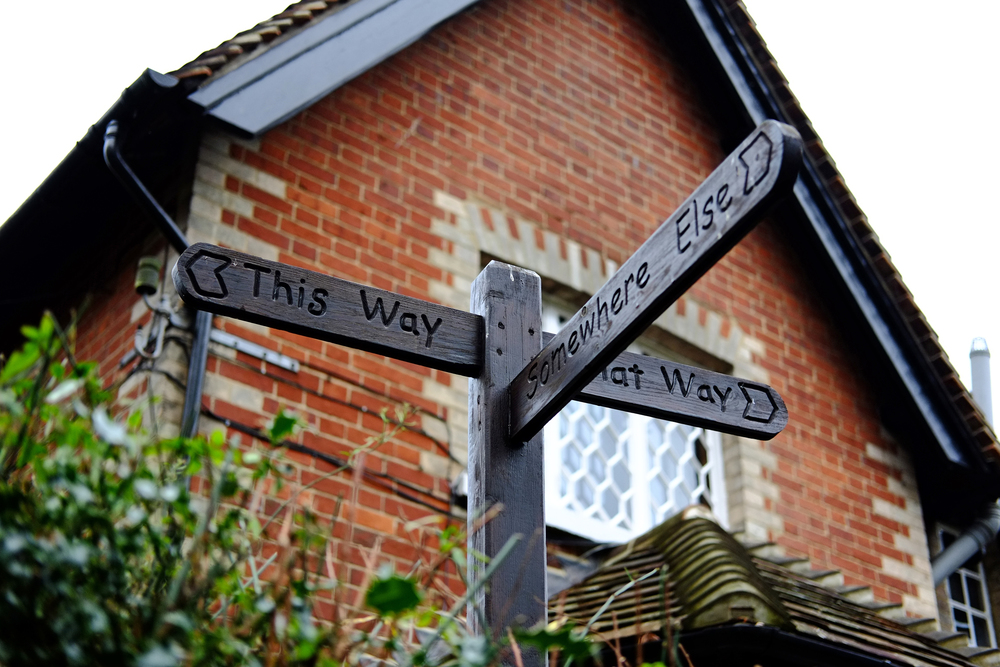
This new 35mm f/2.0 is a lens that harks back to a time when all cameras came with a fifty as standard. To be honest, if they had all been this good, there would have been very little need for anything else. It is clearly—and unsurprisingly—the better lens when compared to the 27, so if you are buying into the system and on a budget it would be the one to choose. It is, again unsurprisingly, a faster focusing lens than its older sibling. That, combined with the keener pricing, lower weight and weatherproofing would suggest that it is the better of the two, but it isn’t—it is simply newer and more advanced.
Different signatures
These are two lenses with two different signatures that deliver results sufficiently different (that word again) to warrant both having a place in the enlightened photographer’s armoury (and kit bag). Please don’t make the mistake in the next few weeks of being hasty and chopping in your 1.4 for a 2.0. You will regret it. Instead, if you can, buy the new one and hang on to your existing 1.4, at least until we see a XF35 1.4 Mk. II WR.
Finally, I said earlier that this lens is made for the X-Pro1. I am of course wrong. It’s actually made with the X-Pro2 firmly in mind. Roll on January.
P.S. Since this is probably my last piece for the year I’d just like to take this opportunity to send a letter to the Fujinon elves helping Santa. Wouldn’t it be great to pair this new little 35 with an equally compact and high-performance 23mm f/2.0? I do appreciate the existing lens in this focal length, honestly I do, but just think how handy a more travel-friendly version would be.
You can also find Bill Palmer at Rangefound and Lightmancer
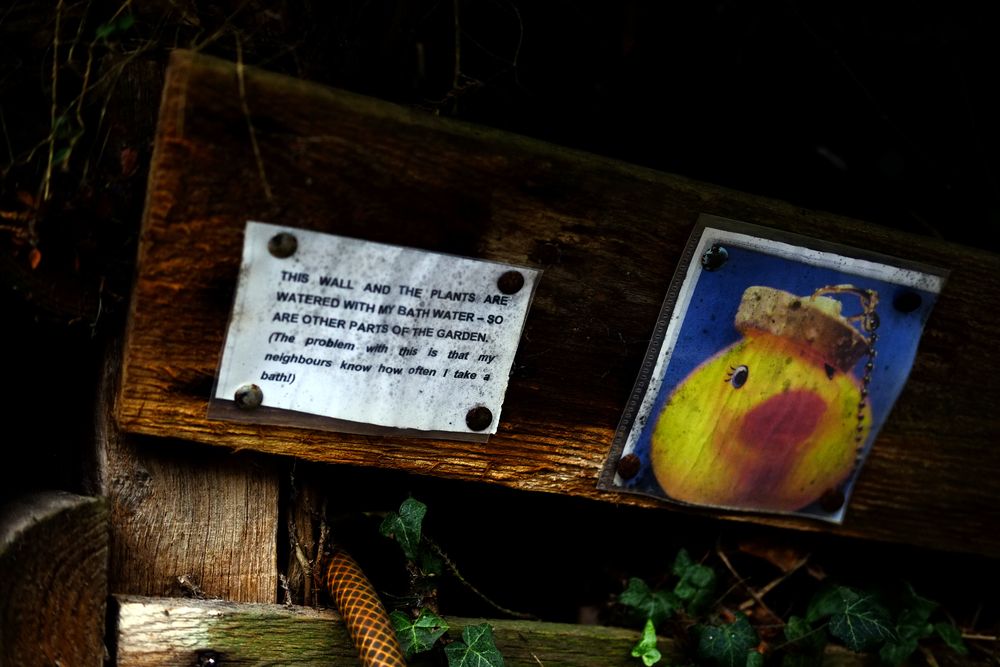

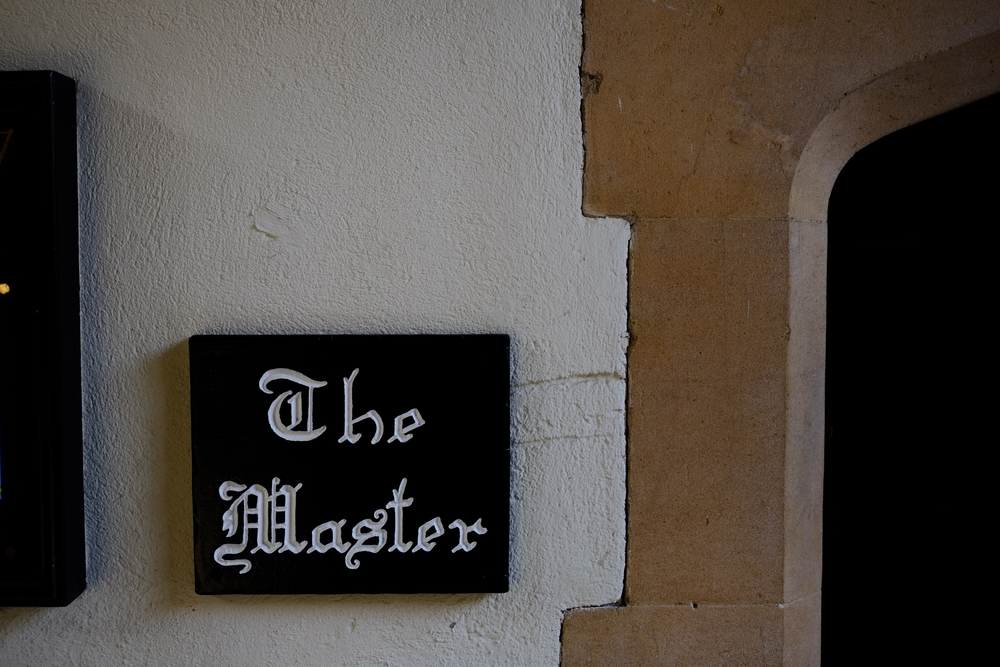
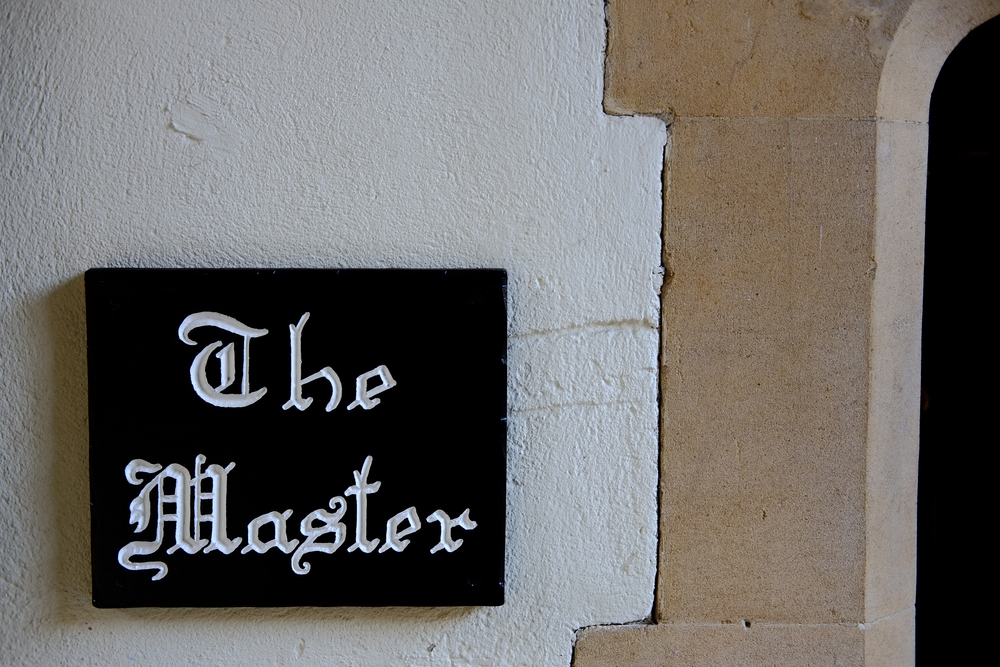
Above: The Master, 27mm and 35mm. Below: Carving 27mm and 35mm
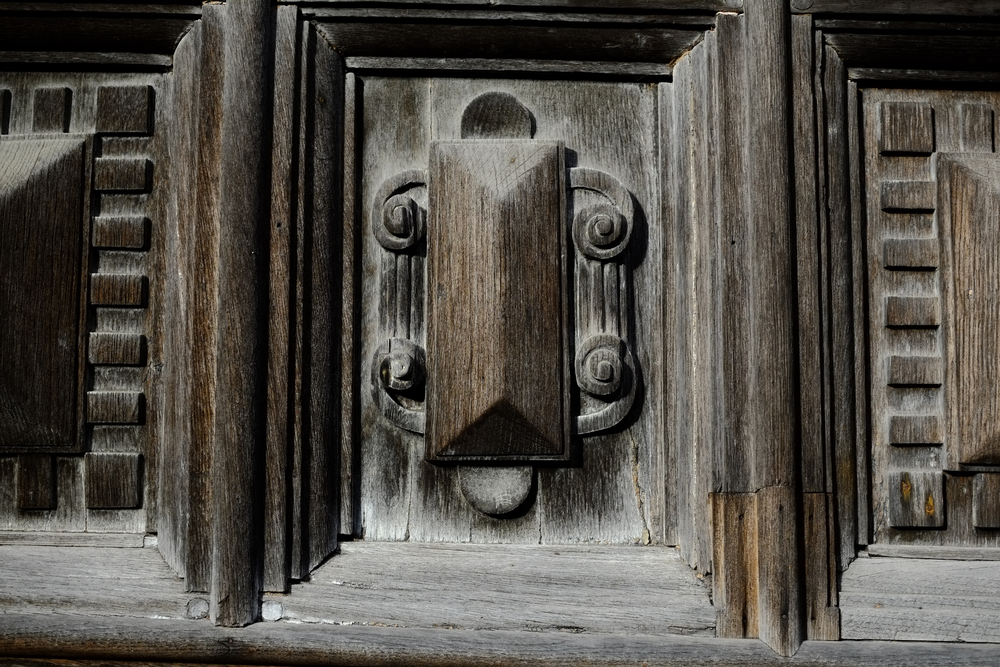
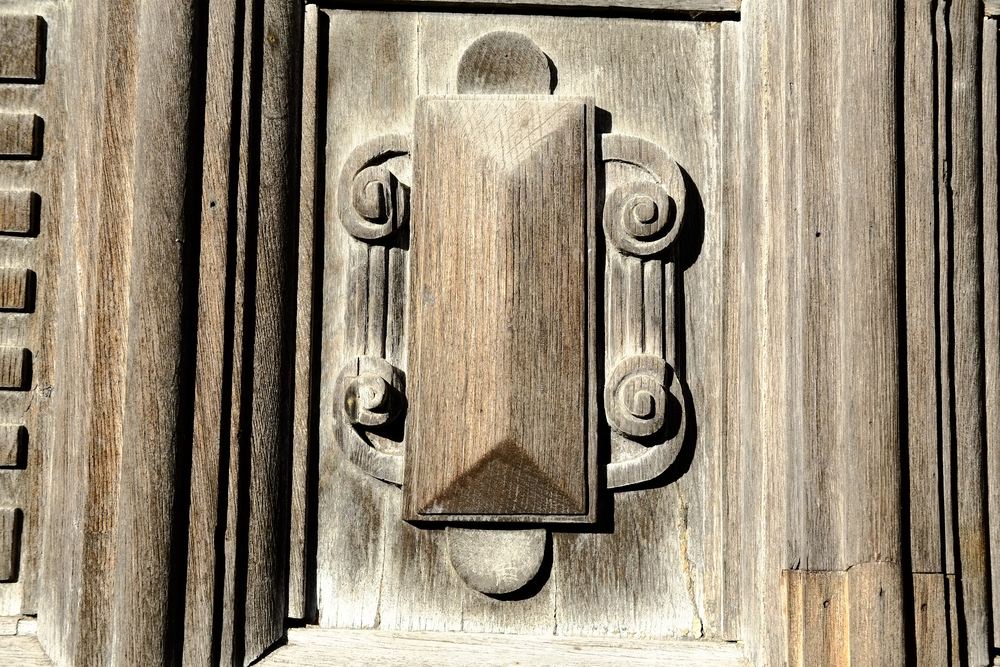


Above: Coat of Arms, 27mm and 35mm
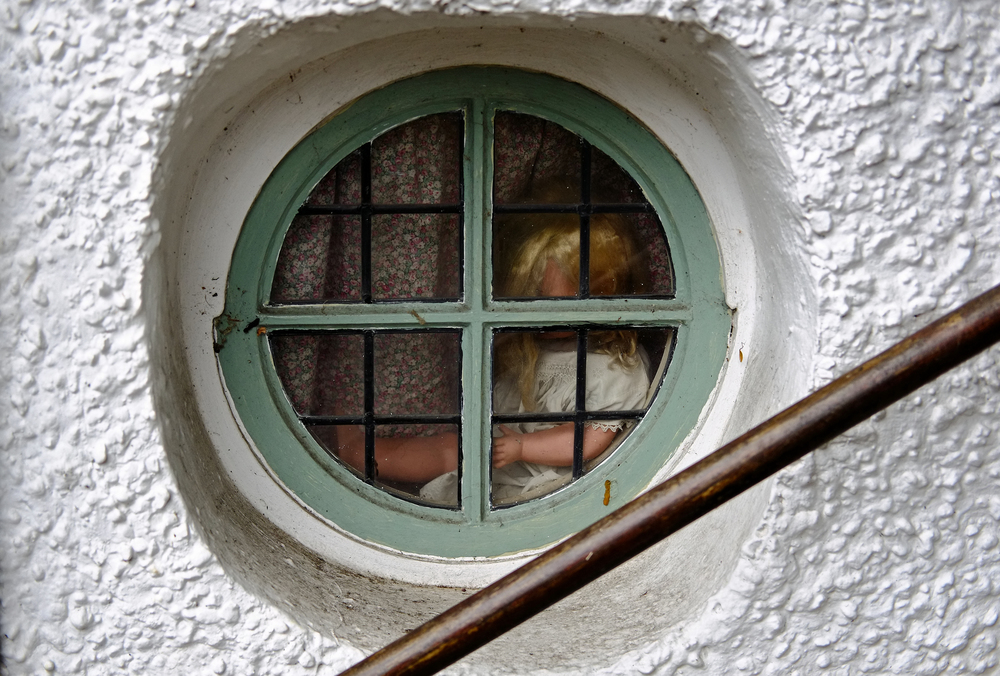
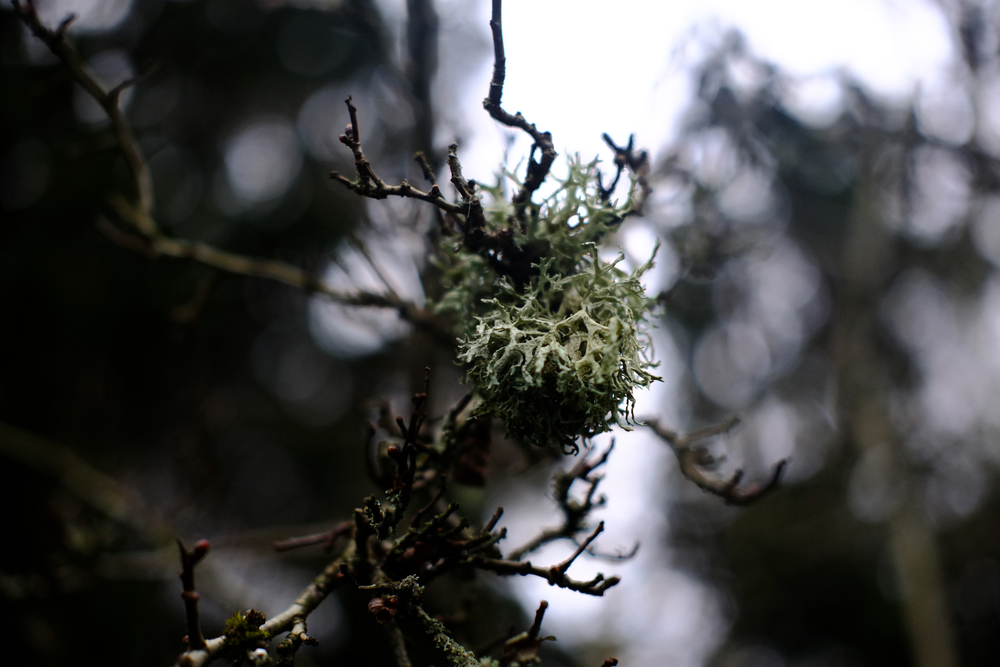

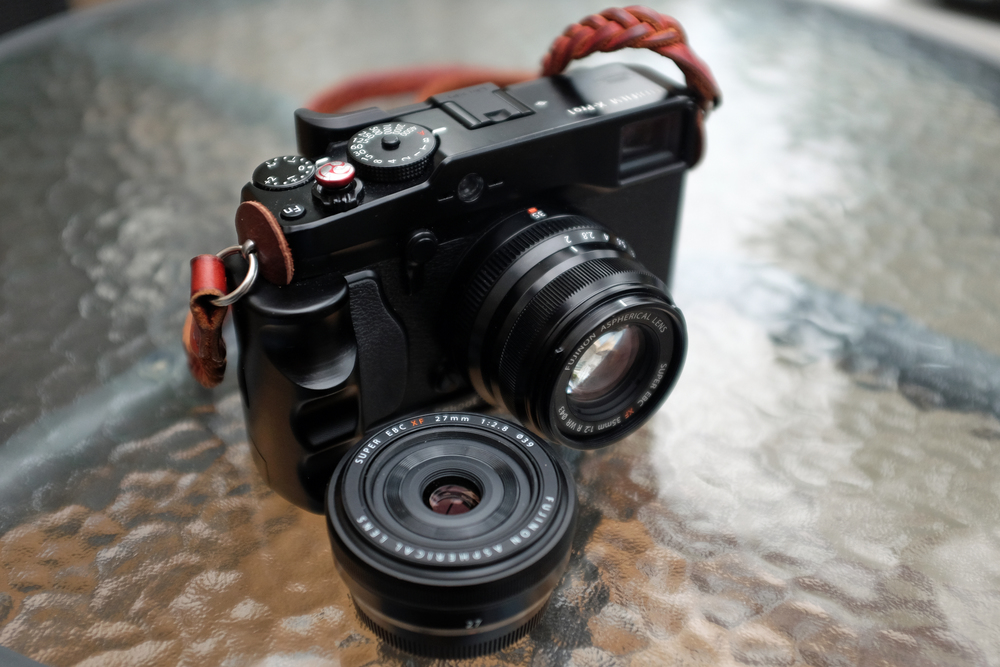
Hi there, thanks for the review.
The outcome actually reminds me very much of photos shot with my XE1/ XPro and Canon FD 35 2.0 (with/without Metabones Speedbooster). As I focus manually most of the times – with the Fujix 35 1.4 as well – and although it seems to be a very good lens for that price I think I dont need AF, I don’t need summilux-looks (what for?), so I can stay with my combination. Ok, it is much more compact and lighter than the Metabones-Canon FD 35 2.0 combination. True.
Jens, thank you for taking the time to comment. If you are a manual focusser, then you really should give the new 35 a look. Even though focus is "fly by wire" it gives a real sensory feedback as you turn the ring that is lacking in the older 1.4. I am still experimenting with the lens but am finding MF much easier because the increased resistance means you end up nailing focus more positively first time,without "overshooting". It is easier to do than to write, but I would encourage you to have a go for yourself and see what you think.
Hi Bill
Thanks for this post. Truly informative and useful. I particularly appreciate comparison with the 27 as I too enjoy the 40mm view.
Thanks for the feedback, Stephen. In writing this review I wanted to strike a balance between two lenses that I enjoy and that have their own place. The 27 remains a good "travel" and "street" lens by virtue of it’s angle of view, compact size, lightness and handling. The 27 is a good lens, but the new 35 is an exceptional lens for the price.